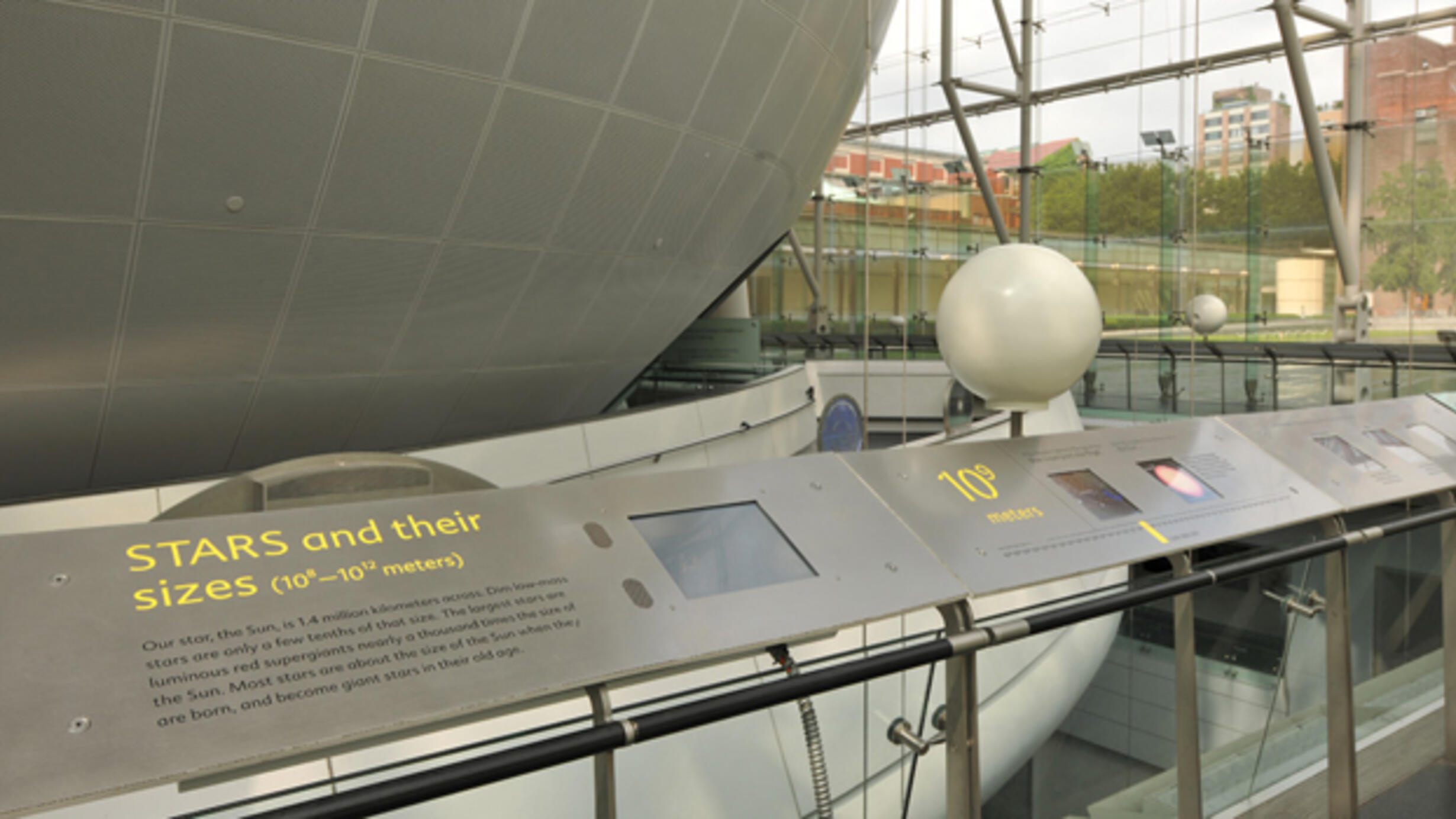Stars and Their Sizes
Part of Scales of the Universe.
 AMNH/D. Finnin
AMNH/D. Finnin Our star, the Sun, is 1.4 million kilometers across. Dim low-mass stars are only a few tenths of that size. The largest stars are luminous red supergiants nearly a thousand times the size of the Sun. Most stars are about the size of the Sun when they are born, and become giant stars in their old age.
If the Hayden Sphere is the size of the blue supergiant star Rigel, then this model is the relative size of the Sun…
Our Sun is a star of intermediate size, mass, and luminosity (light output). In its old age, the Sun will swell more than a hundredfold to become a red giant that is larger than the star Rigel.
AMNH/D. Finnin
AMNH/D. Finnin
AMNH/D. Finnin
Jupiter is the largest planet in the solar system. Its diameter is roughly one-tenth that of the Sun, and then times that of Earth.
In This Section
Exhibit
The Sun
If the Hayden Sphere is the size of the blue supergiant star Rigel, then this model is the relative size of the Sun.
Exhibit
Alpha Centauri
If the Hayden Sphere is the size of the blue supergiant star Rigel, then this model is the relative size of Alpha Centauri.
Exhibit
Sirius
If the Hayden Sphere is the size of the blue supergiant star Rigel, then this model is the relative size of Sirius.
Exhibit
Vega
If the Hayden Sphere is the size of the blue supergiant star Rigel, then this model is the relative size of Vega.